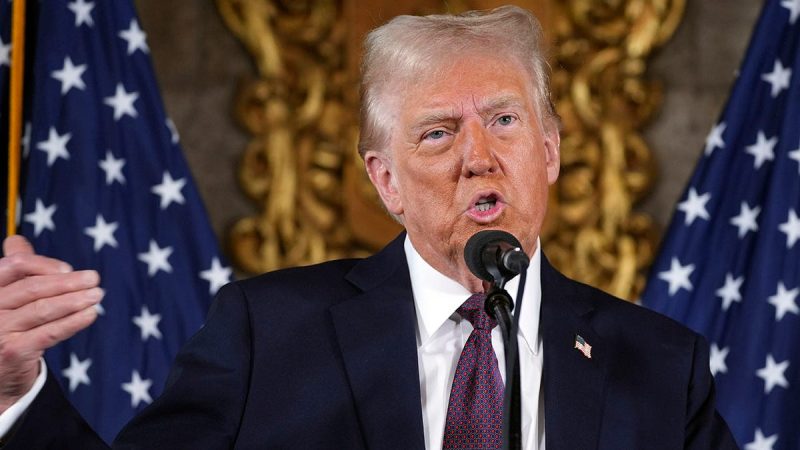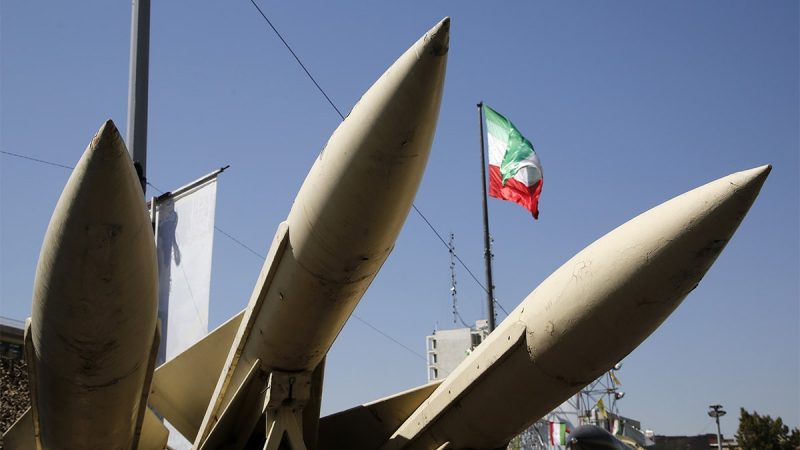Saga Metals Corp. (‘SAGA’ or the ‘Company’) (TSXV: SAGA) (OTCQB: SAGMF) (FSE: 20H) a North American exploration company focused on critical mineral discovery, is pleased to announce the completion of an initial petrographic petrological analysis and geophysical analysis, improving the geological understanding of the drill ready Radar Titanium-Vanadium (Ti-V) project in Labrador, Canada.
Michael Garagan, CGO & Director of Saga Metals Corp. comments: ‘This data couldn’t have come at a better time as we head into the mobilization of our maiden drill program at the Radar project. These magnetic inverse sections are going to help enormously in our drill targeting throughout the 2025 program. As you can see in Figure 3 below, the main anomalous zone is between 200-400 meters depth, but we can still see the high- grade potential in this model at 600+ meters below the surface. Ultimately the model is most accurate in the first 200 meters where the magnetics are still strong enough to give a robust signature. We know this system is vertical, so I would like to see the system remaining robust as we increase in depth. The projection of the model below 200-400 meters is encouraging because it’s based off the presence of magnetite, which we have picked up in our surveys. This interpretation suggests impressive width throughout the structure and our drill program will start to better define the nature of this zone. We now have a much better understanding of this Vanadium titanomagnetite structure and we are excited to build upon this knowledge as we continue our metallurgical analysis throughout drilling, keeping the economic viability of our projects at the forefront to ensure value creation for our shareholders.’
Radar Titanium & Vanadium Project – Labrador, Canada
The Radar Ti-V Property is located 10km south of Cartwright in Labrador, Canada. The project spans 17,250 hectares and benefits from road access, supporting efficient exploration and development.

Figure 1: Regional map of the Radar Ti-V project highlighting the Hawkeye, Trapper and third transitional zone and the projects proximity to the town of Cartwright, Labrador
The Hawkeye zone is the most prospective target on the property. Detailed geophysics and surface samples are suggestive of a complex and multi-phased layered mafic intrusion that may be upwards of 1km wide and 4km long. The geophysics completed show very detailed correlation to the rock samples and observed phase changes with the potential for multiple parallel systems.
Geophysics Completed with Inverse Interpretation:
Saga Metals has successfully completed a detailed magnetic and electromagnetic (EM) survey over the northwest section of the Hawkeye Zone at the Radar Project. Utilizing ground-based equipment on a tightly spaced grid, with 25 meters between stations and 50-meter line spacing, the survey delivered high-resolution magnetic and conductivity data. This effort has proven highly effective in mapping magnetite-rich zones within the Gabbro Norite host rock, a key indicator of titanium (TiO₂) and vanadium (V₂O₅) mineralization.
The magnetic survey was so successful that the high-resolution imagery combined with sample assays and field observations can be used to map some of the most distinguishing features of the system throughout this zone.
SAGA continued to update its geophysics with the magnetic inversions of the Hawkeye zone. Completed by Chris and David Mark of Geotronics, the magnetic inversions can project, with a high degree of certainty up to 400 meters in depth, what the mineralized magnetic body looks like beneath the surface.

Figure 2: Magnetic inversion of the Hawkeye zone looking north-northeast. Range of > 0.02 susceptibility cut off.

Figure 3: Same magnetic inversion of the Hawkeye zone looking east at profile cross section with > 0.02 susceptibility cut off.
Petrographic Analysis at the Radar Ti-V Project:
Recent petrographic work completed by Dr. Al Miller on rock samples from the Hawkeye zone have increased our understanding of the mineralogical host of Titanium and Vanadium mineralization at the Radar project. This sets the foundation for the metallurgical work the team hopes to be able to build on during the 2025 drill programs.
First look at the petrography of the Hawkeye zone reveals more than one composition of magnetite; evidence which contributes to the hypothesis of multiphase mineralization events. Additionally, petrographic evidence reveals that much of the titanium and vanadium mineralization occurs within magnetite with a lack of ilmenite in many of the layers. This is key to understanding how these elements are locked up together and ultimately how they’ll separate during extraction. These layers have assayed high TiO2% and V2O5% leading to the use of Vanadium Titanomagnetite (VTM) classification of several mineralized layers of the Hawkeye zone. Ilmenite with exsolution lamellae of the magnetite was observed but only in a few cases. This has contributed to what can be called differential compositional layering and multiple mineralization magmatic layering events.
Michael Garagan, CGO & Director of Saga Metals Corp. stated: ‘The results of the work completed to date suggests that there were several pulses of magma and multiple phases of deposition. Magnetite was the dominant mineral in the identified layers but differs slightly, representing a different genesis. The observed differences show multiple phases of titanium and vanadium locked up in the magnetite. One phase shows magnetite with minor amounts of ilmenite, which likely formed at its own chemical expense and likely taking Ti and V to form that mineral. The second phase has no ilmenite present and can be called Titanomagnetite. These different magnetite phases can be found in very different layers from each other. This suggests a mineralizing system that was active for a long period of time and the possibility of more mineralization over a broader area.’

Figure 4 : Petrography of Hawkeye zone shows significant magnetite (Mt) mineralization with a Hornblende (Hb), Diopside/ Orthopyroxene (Di) and Plagioclase groundmass.
VTM’s are a mineralization style that has not received much attention in North America but is a pivotal piece of China’s iron, titanium and vanadium mining and production industry.
‘Vanadium titanomagnetite (VTM), which contains valuable elements such as iron, vanadium, and titanium, has an extremely high potential value. VTM resources in the PanXi regions of China are estimated at up to 10 Gt (billion tons), and account for 93% and 63% of the country’s titanium and vanadium resources respectively. The exploitation of VTMs has thus received much attention.
Traditionally VTM have been considered difficult to treat and separate metallurgically but due to their importance within countries like China, new research and separation methods are proving that this is no longer the case. Recent efforts of VTM recovery methods succeeded in achieving: Recoveries of up to 80.08% for titanium, 95.07% for iron, and 71.60% for vanadium were achieved.’ (Barksdale, 1966; Chen et al., 2011)
Michael Garagan, CGO & Director of Saga Metals Corp. comments : ‘These results are very promising for the future of the Radar project. To expedite the economic viability of multiple projects within our portfolio we felt it necessary to begin this mineralogical and early metallurgical work. Encouragingly, these results are exactly what we hoped to see from the rock as they highlight a favourable mineralogical genesis for a competitive Vanadium Titanomagnetite deposit.’

Figure 5: Petrography of Hawkeye zone shows significant magnetite (Mt) mineralization with weathered Pyrrhotite (Po) crystals
Petrographic work and analysis completed by Dr. Al Miller:
With an Honours B.Sc. and Ph.D., Dr. Miller brings over 25 years of consultancy experience in mineral deposits and previously worked for 25 years with the Geological Survey of Canada, where he specialized in large-scale mapping and deposit evaluation. His expertise covers a wide range of minerals, including uranium, gold, nickel-copper-platinum group elements (Ni-Cu-PGE), and copper-gold porphyry. He has also contributed to global exploration efforts across Canada, the Americas, China, and Russia. With numerous publications to his name, his extensive industry experience includes roles as a Director, Chief Geologist, VP of Exploration, and Head of Technical Teams for several exploration companies.
Market opportunity for Titanium and Vanadium:
‘As of June 2023, the market value of titanium was projected to grow to nearly 31 billion U.S. dollars. The titanium market size is forecast to grow over the coming years, to nearly 52 billion U.S. dollars in 2030.’ ( M. Jaganmohan , 2025).
‘The global vanadium market size was valued at USD 4.28 billion in 2023 and is projected to grow from USD 3.46 billion in 2024 to USD 4.89 billion by 2032, exhibiting a CAGR of 4.4% during the forecast period. Asia Pacific dominated the vanadium market with a market share of 72.9% in 2023.’ ( Fortune Business , 2024)
Drilling Upcoming at the Radar Titanium & Vanadium Project:
The Company has received drill permits from the Newfoundland & Labrador government to commence drilling at Radar Titanium-Vanadium (Ti-V) project.
Highlights heading into the drilling programs include:
- Maiden Drill Programs: Drilling is scheduled to commence in Q1 2025 with a minimum 1,500m program at the Radar Ti-V Project.
- Radar Ti-V Drilling Location: The Hawkeye zone is the most advanced zone with both surface samples and detailed geophysics creating clear drill targets.
- Radar’s Hawkeye Zone Potential: Assays have returned consistent values between 2.5 – 11.1% TiO2 and 0.2 – 0.66% V2O5 , confirming the presence of high-grade titanium & vanadium across a potential 1km wide and 4km long and through recent geophysics the system is suggestive of being open at depth beyond 600m.
About Saga Metals Corp.
Saga Metals Corp. is a North American mining company focused on the exploration and discovery of critical minerals that support the global transition to green energy. The company’s flagship asset, the Double Mer Uranium Project, is located in Labrador, Canada, covering 25,600 hectares. This project features uranium radiometrics that highlight an 18-kilometer east-west trend, with a confirmed 14-kilometer section producing samples as high as 0.4281% U 3 O 8 and spectrometer readings of 22,000cps.
In addition to its uranium focus, SAGA owns the Legacy Lithium Property in Quebec’s Eeyou Istchee James Bay region. This project, developed in partnership with Rio Tinto, has been expanded through the acquisition of the Amirault Lithium Project. Together, these properties cover 65,849 hectares and share significant geological continuity with other major players in the area, including Rio Tinto, Winsome Resources, Azimut Exploration, and Loyal Lithium.
SAGA also holds secondary exploration assets in Labrador, where the company is focused on the discovery of titanium, vanadium, and iron ore. With a portfolio that spans key minerals crucial to the green energy transition, SAGA is strategically positioned to play an essential role in the clean energy future.
For more information, contact:
Saga Metals Corp.
Investor Relations
Tel: +1 (778) 930-1321
Email: info@sagametals.com
www.sagametals.com
Qualified Person
Peter Webster P.Geo. CEO of Mercator Geological Services Limited is an Independent Qualified Person as defined under National Instrument 43-101 and has reviewed and approved the technical information related to the Radar Ti-V Project disclosed in this news release.
The TSX Venture Exchange has not reviewed and does not accept responsibility for the accuracy or adequacy of this release. Neither the TSX Venture Exchange nor its Regulation Service Provider (as that term is defined in the policies of the TSX Venture Exchange) accepts responsibility for the adequacy or accuracy of this release.
Cautionary Disclaimer
This news release contains forward-looking statements within the meaning of applicable securities laws that are not historical facts. Forward-looking statements are often identified by terms such as ‘will’, ‘may’, ‘should’, ‘anticipates’, ‘expects’, ‘believes’, and similar expressions or the negative of these words or other comparable terminology. All statements other than statements of historical fact, included in this release are forward-looking statements that involve risks and uncertainties. In particular, this news release contains forward-looking information pertaining to the Company’s petrographic and geophysics results as well as plans and objectives in respect of the planned drill programs. There can be no assurance that such statements will prove to be accurate and actual results and future events could differ materially from those anticipated in such statements. Important factors that could cause actual results to differ materially from the Company’s expectations include, but are not limited to, changes in the state of equity and debt markets, fluctuations in commodity prices, delays in obtaining required regulatory or governmental approvals, environmental risks, limitations on insurance coverage, risks and uncertainties involved in the mineral exploration and development industry, and the risks detailed in the Company’s final prospectus in Manitoba and amended and restated final prospectus for British Columbia, Alberta and Ontario dated August 30, 2024, filed under its SEDAR+ profile at www.sedarplus.ca, and in the continuous disclosure filings made by the Company with securities regulations from time to time. The reader is cautioned that assumptions used in the preparation of any forward-looking information may prove to be incorrect. Events or circumstances may cause actual results to differ materially from those predicted, as a result of numerous known and unknown risks, uncertainties, and other factors, many of which are beyond the control of the Company. The reader is cautioned not to place undue reliance on any forward-looking information. Such information, although considered reasonable by management at the time of preparation, may prove to be incorrect and actual results may differ materially from those anticipated. Forward-looking statements contained in this news release are expressly qualified by this cautionary statement. The forward-looking statements contained in this news release are made as of the date of this news release and the Company will update or revise publicly any of the included forward-looking statements only as expressly required by applicable law.
Photos accompanying this announcement are available at
https://www.globenewswire.com/NewsRoom/AttachmentNg/54dc438a-fb0e-4339-94fc-d248afe5cabe
https://www.globenewswire.com/NewsRoom/AttachmentNg/6bdf78ca-308d-4d20-9949-5e047fec4841
https://www.globenewswire.com/NewsRoom/AttachmentNg/dee57c5f-17ee-48b2-96ab-5d837357136b
https://www.globenewswire.com/NewsRoom/AttachmentNg/5c0e668f-799f-4064-a785-ce3a7c0ddf92
https://www.globenewswire.com/NewsRoom/AttachmentNg/ca80ceff-4c17-494c-b86d-f30ec8fb0fab






























